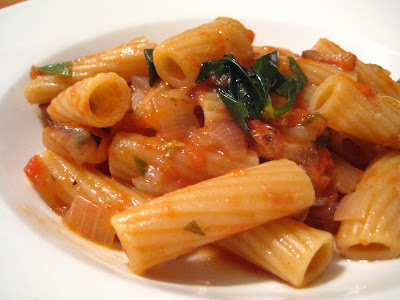NOTE: Oven canning is a controversial subject that I wanted to discuss, not necessarily to recommend. I want to state again that the NCHFP is against oven canning, and they make the guidelines for safe food preservation. If you are a new canner, please stick with a boiling water bath to process your food. Please read through all the comments, they are informative and helpful. I want to stress that when discussing this procedure, it is with regard to high-acid jams, marmalades and jellies only.
Recently I made some star fruit jam (recipe to follow in a few days!). It was a rather large batch, so I felt it was time to try something new: a method of sealing your jars that is called oven canning. There's a lot of dissent on the subject, and I'm writing down what I've come across, both yay and nay, in order to make some sense of the subject. I'd love to hear from you in the comments section if you have any thoughts!
I first became aware of this technique via artisan jam company, Blue Chair Fruit. BCF proprietor, jammer and author, Rachel Saunders, uses the oven for sealing her jars and recommends this process in her book. Many other small jamming companies use this procedure. Why? I think the biggest reason is because you can process a lot of jars at once. What's surprising is it's frowned upon by the National Center for Home Preserving, and many other canning heavy hitters. So then why are companies allowed to do it? [Side note: Honestly, you could let your jars seal on their own (which is called open kettle sealing) and no one would be the wiser. It's sealed, right? Who cares how you sealed it? And, as you won't get any really bad stuff from fruit (as long as said fruit are not low acid) you really would never know. Oops! I'm digressing.]
I've been asking around about this, ever since a friend of mine took a class with BCF and raved about the technique. She loved that she didn't need to bring her big pot out, and fill it with water, etc. etc. Point taken. Rebecca at RCakewalk also found it to be a great technique; check out her post on it. I pestered Doris from Doris and Jilly Cook about it and she said, sure, why not? As long as you don't get silly and use this technique with anything but fruit. Why? Because fruit is higher in acid, and generally less risky. (Please see Doris' comment below, with clarification on what she had said to me about oven canning.)
Here's how it goes:
Oven canning: Heat your oven to 250 degrees. If you are not sure of your oven's temperatures, and don't have a oven thermometer, I suggest that you stick with water bath canning. (And then, go out and buy a oven thermometer, for goodness sakes! They're, like, four bucks.) On a cookie tray arrange your jars facing up. You will want to heat these for a good thirty minutes. BCF recommends putting the lids in at the same time, but I thought that might compromise the rubber seal so I put them in, rubber side up, at the last ten minutes.
Be careful! If you leave the jars in over a half hour (which is fine) please watch out when you start ladling your fruit in. Always, always pour a little bit in first. If the jars are too hot, it will bubble immediately (and possibly splatter you). If this happens, let the jars cool a few minutes before you begin. Fill the jars as directed in your recipe (usually 1/4 to 1/2 inch). Seal the jars, and return them to the oven for about fifteen minutes. When they are done, put the cookie tray with the jars on it cool on a rack. They will ping as usual, and seal themselves.
It took me a while to try this out as I'm a creature of habit, and I've come to find that this technique seemingly works just fine. The best thing about it, is that when doing larger batches (which I rarely do) it's easier. It's also a lot quieter. Call me crazy but a pot of water boiling furiously for almost an hour sort of keeps me on edge. Using the oven, it was just me and the pot of jam. I usually do very small batches, only around four or five half-pints at a time.
However, I am new to this process and am still feeling it out. I would love hear what you have to say about it. Have you tried it? Do you love it? Do you utilize it in your business? When Saunders was on Martha Stewart's show, she made a jam and also showed her oven technique. Martha seemed to dig it. There's a lot of appreciation for it, but there's also a great deal of vehement opposition.
Here are a few quotes from some venerable institutions, all in the anti-oven-canning-camp:
From the National Center for Home Food Preservation:
"Is it safe to process food in the oven?
No. This can be dangerous because the temperature will vary according to the accuracty of oven regulators and circulation of heat. Dry heat is very slow in penetrating into jars of food. Also, jars explode easily in the oven."
From the Agricultural Extension Service at the University of Tennessee:
"...food inside a canning jar in the oven can be heated no higher than the boiling point of water (212 degress F at sea level) regardless of how high the air temperature is inside the oven. This is a basic law of physics."
From Pick Your Own:
"Oven canning is extremely hazardous."





















